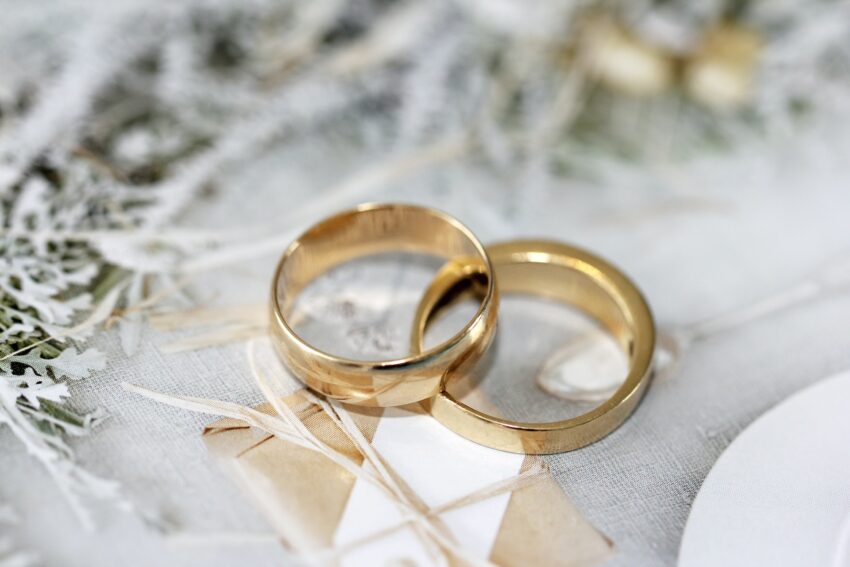Wedding rings symbolize love, commitment, and partnership, representing the eternal bond between couples. Throughout history, these precious jewelry pieces have evolved in form and meaning, reflecting different societies’ changing customs, beliefs, and traditions. In this blog post, we’ll journey through time to explore the fascinating history of wedding rings, from their ancient origins to their modern symbolism.
Ancient Origins
Wedding rings have a long and storied history, dating back thousands of years. The tradition of exchanging rings during wedding ceremonies can be traced to ancient Egypt, where they believed that the circle symbolized eternity and the hole in the center represented a gateway or door. These early rings were typically made of materials like hemp and leather.
Roman Influence
The ancient Romans played a significant role in shaping the modern wedding ring. In Roman society, giving a gold ring was a public pledge that the woman was no longer available for courtship. This “annulus pronubis” marked the beginning of the tradition of wearing the ring on the fourth finger of the left hand, as they believed this finger contained the ‘vena amoris’ or the ‘vein of love’ that directly connected to the heart.
Medieval Rings
Medieval Europe saw the emergence of intricately designed rings. Rings during this period often featured religious motifs and were made of materials like iron, leather, or silver. The Church played a significant role in the choice of ring materials, as it discouraged the use of precious stones or metals, emphasizing the spiritual significance of marriage.
Renaissance and the Diamond Ring
During the Renaissance, wedding rings began to include gemstones, and diamonds gained popularity due to their rarity and durability. The De Beers diamond company’s marketing campaigns in the 20th century further solidified the diamond engagement ring’s status, symbolizing wealth and commitment.
The Modern Wedding Ring
In the modern era, wedding rings have evolved to represent personal taste, style, and sentiment. Traditional gold bands are still popular, but couples now have many options, including white gold, platinum, and even unconventional materials like titanium and wood. Customization has become common, with engraved names, dates, and personal messages adding a personal touch to the rings. You can personalize and find the perfect ring at regalhattongarden.co.uk.
Cultural and Symbolic Variations
Different cultures have unique customs surrounding wedding rings. For example, in Jewish tradition, a plain, unadorned band symbolizes the simplicity and purity of the union. Indian culture often features intricate designs and gemstones on wedding rings, with each stone representing different aspects of the marriage.
Ring Exchange Ceremonies
The way wedding rings are exchanged has also evolved. In many Western weddings, the exchange of rings is a central part of the ceremony, symbolizing the couple’s commitment to one another. In contrast, in some Eastern cultures, the groom gives the bride a ring as a symbol of his love and dedication, and she may also receive other pieces of jewelry to mark the union.
Modern Symbolism
Today, wedding rings symbolize the enduring commitment and love between two individuals. The circular shape continues to represent eternity, and the placement on the fourth finger suggests the heart’s connection. Wearing a wedding ring on the left hand is still prevalent in many countries, although some regions have different customs.

